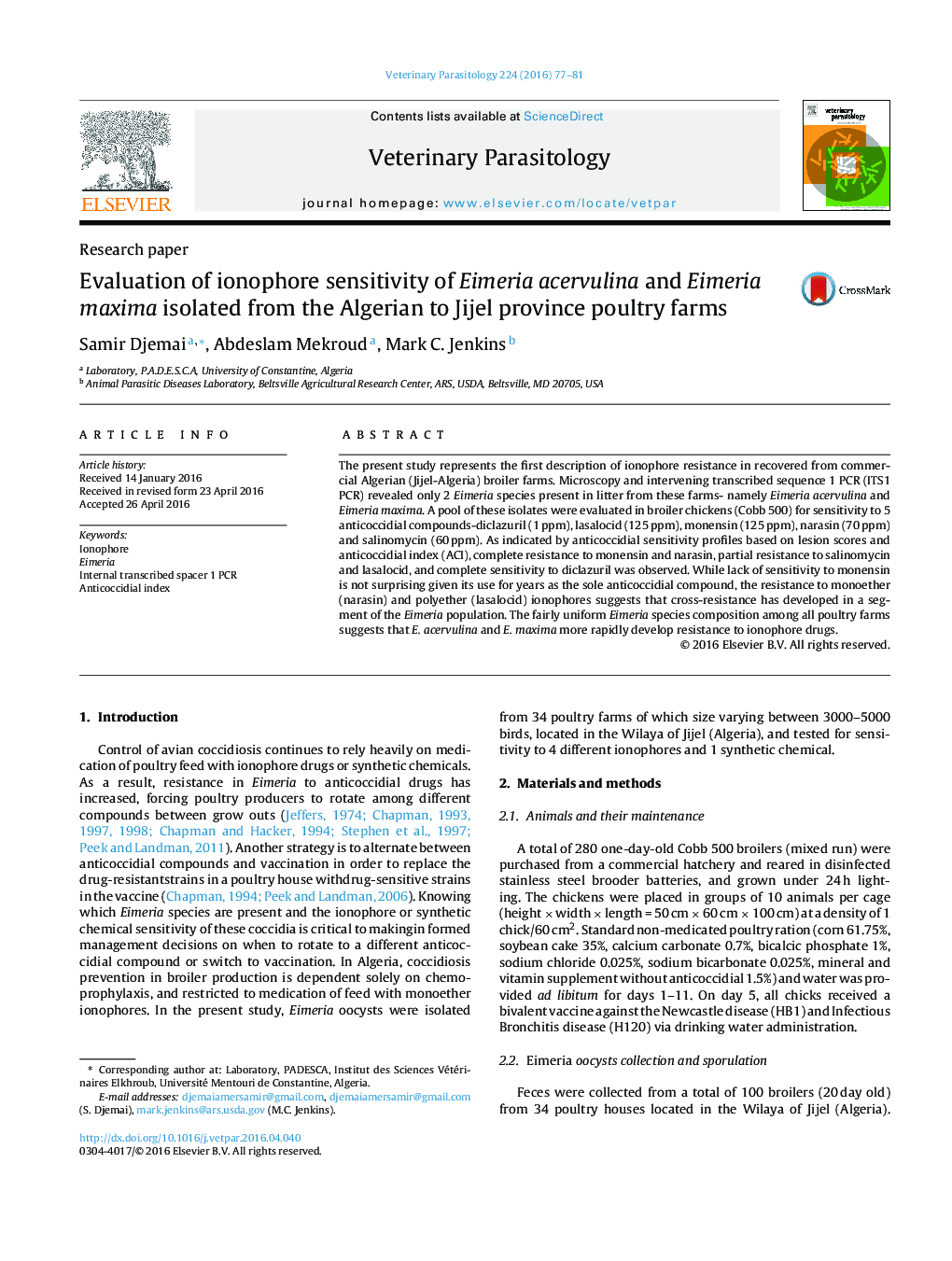| Article ID | Journal | Published Year | Pages | File Type |
|---|---|---|---|---|
| 2469823 | Veterinary Parasitology | 2016 | 5 Pages |
•The species composition of Eimeria in litter from Algerian broiler farms utilizing monensin was confirmed by microscopy and ITS1 PCR.•Drug sensitivity profile of Eimeria in the pool of these isolates in was examined using anticoccidial drug sensitivity tests.•Only two Eimeria species, namely Eimeira acervulina and Eimeria maxima, were found in litter from all poultry farms.•Complete resistance to monensin and narasin, partial resistance to salinomycin and lasalocid was observed.•Cross-resistance to ionophore compounds can be suggested.
The present study represents the first description of ionophore resistance in recovered from commercial Algerian (Jijel-Algeria) broiler farms. Microscopy and intervening transcribed sequence 1 PCR (ITS1 PCR) revealed only 2 Eimeria species present in litter from these farms- namely Eimeria acervulina and Eimeria maxima. A pool of these isolates were evaluated in broiler chickens (Cobb 500) for sensitivity to 5 anticoccidial compounds-diclazuril (1 ppm), lasalocid (125 ppm), monensin (125 ppm), narasin (70 ppm) and salinomycin (60 ppm). As indicated by anticoccidial sensitivity profiles based on lesion scores and anticoccidial index (ACI), complete resistance to monensin and narasin, partial resistance to salinomycin and lasalocid, and complete sensitivity to diclazuril was observed. While lack of sensitivity to monensin is not surprising given its use for years as the sole anticoccidial compound, the resistance to monoether (narasin) and polyether (lasalocid) ionophores suggests that cross-resistance has developed in a segment of the Eimeria population. The fairly uniform Eimeria species composition among all poultry farms suggests that E. acervulina and E. maxima more rapidly develop resistance to ionophore drugs.
